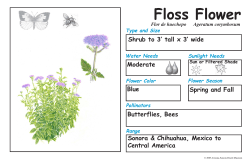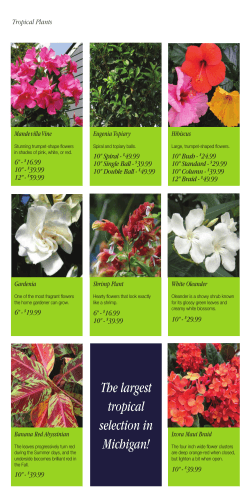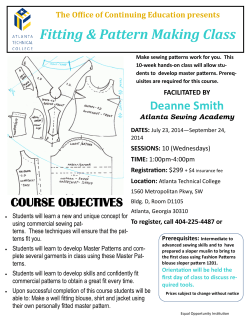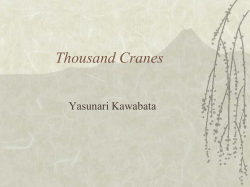
Flower Pounding: A Springtime Art Supply List Instructor: Karen LiVecchi tact:
Flower Pounding: A Springtime Art Instructor: Karen LiVecchi Contact: [email protected] Saturday, May 17, 2014 9:00 AM - 4:00 PM Paul Smiths College VIC Supply List Flower Pounding tools • a small lightweight hammer with a flat metal head (just your basic hammer) • hammering surface – a flat wooden chopping board (a nice hard surface that won’t dent when you, somewhat gently, hit it with a hammer) • roll of paper towels (plain white) • roll of clear tape to anchor the petals and leaves (Magic tape works well) • tweezers for handling petals and leaves • fine or extra fine Pigma Micro pen – black (it’s acid-free and archival) • scissors for cutting paper • gentle brush for brushing plant material off the fabric or paper Flower Pounding materials • Prepared for Dyeing (PFD) white fabric will be supplied for your final design(s) • 2 yards white muslin – washed and ironed – for experimenting with flower pounding (no fabric softener or dryer sheets) • a few regular (pad size) sheets or several small sheets of watercolor paper • flowers and leaves – suggestions listed under Materials Sewing machine and equipment: • sewing machine with bobbins, electrical cords, foot pedal • electrical power strip and heavy duty extension cord • basic sewing tools • thread – white, medium value to coordinate with project • rotary cutter and cutting mat • mini-iron and ironing mat for ironing at your table is optional – there will be two regular sized ironing stations available 1 Possible projects: Pillow Quilt or wall hanging Greeting cards, gift tags, gift bags (paper should be absorbent) Collage Framed watercolor Botanical scarf Potpourri bags (using muslin) Handmade journal Materials It is a good idea to bring more than you think you need to give yourself more choices. Flowers and leaves: Choose flowers that have thin, brightly colored petals. Do not choose plants that are fleshy and full of liquid. Dogwood, wisteria, bee balm, verbena, pansy, impatiens, cosmos, marigold all transfer nicely, but try others as well. Choose leaves that have nice vein patterns, interesting shapes and nice colors. Young leaves work better than older leaves. Redbud, Japanese maple, grape leaves, ferns all work well. Try other leaves as well. Avoid fleshy leaves. Important: Be careful when you pick flowers and leaves outside. Make sure they are not poisonous or irritating, and not from protected areas. Materials for your chosen projects might include various fabrics (batiks blend nicely), batting, pillow form, watercolor paper, other absorbent papers, handmade paper, embellishments and trims, such as ribbons, natural treasures such as twigs, dried flowers, lichen, beads, embroidery thread and needle. Bring the materials you would like to use. 2
© Copyright 2025





















